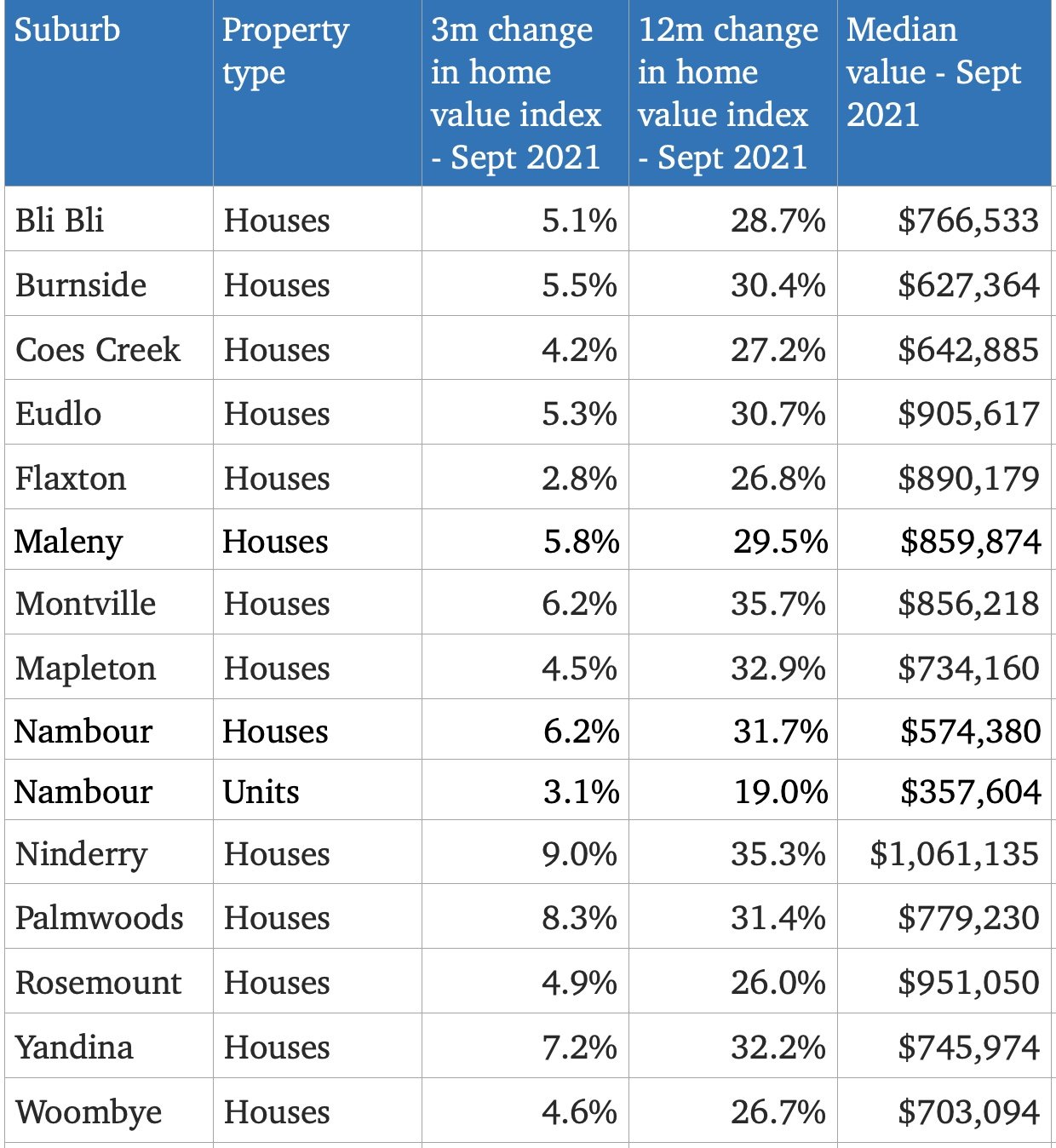What's your home worth this month?
Hill change towns continue to attract record values
Home prices rise $16,000 in a single month
Hinterland regions are continuing to attract big demand from capital city property buyers.
For the average Nambour homeowner, the three month change in average home value to September was 6.2 percent, representing a price rise of $35,000 on the median value of $574,380. Meanwhile Yandina homeowners saw a 7.2 percent spike representing a $53,000 3-month windfall.
Maleny’s Terry Ryder of Hotspotting tips that the Sunshine Coast hinterland will see strong interest in coming months, after the overheated coastal markets experienced strong growth, and some eye-watering prices, over the past two to three years.
“Now the region’s hill change towns are attracting big demand,” Mr Ryder said.
“The Sunshine Coast region is one of the fastest growing areas in the country over the last decade and one of the nation’s most dynamic economies. The Hinterland towns like Montville and Maleny are attracting buyers out of the big cities, including buyers from Sydney and Brisbane. And they’re paying big prices.
“The Sunshine Coast Hinterland is a natural beneficiary of the most powerful force impacting Australian real estate, the Exodus to Affordable Lifestyle, which has been under way for several years but has gained greater impetus during the pandemic period.”
“The median house price for Montville has risen 22 percent to $865,000 in the past 12 months, while Maleny is up 22 percent to $765,000 and North Maleny up 25% to $1,200,000.”
Analysts have said there was no sign of the market slowing anytime soon.
The median value of homes on the Sunshine Coast went up by more than 2 per cent in October.
For the Sunshine Coast, with its average house price of more than $830,000, that equates to about an extra $16,000 a month, or about $4000 a week.
Experts provide three factors responsible for the latest surge.
The first is the ‘wealth effect’, with city slickers feeling richer as their own finances increase due to rampant property price rises.
Telecommuting was the second factor, which allows for employees to work from home, thereby de-emphasising the need to travel to a nearby physical location for employment.
Affordability was the third factor, as hinterland properties tend to be priced lower than those in coastal or big city areas.

